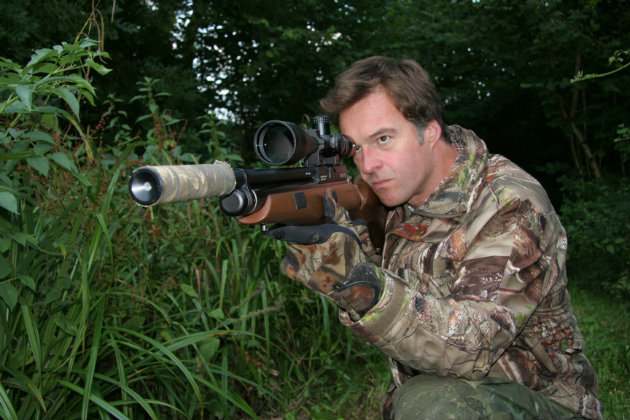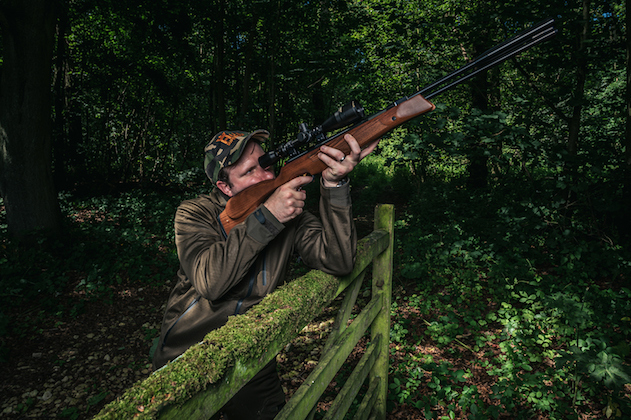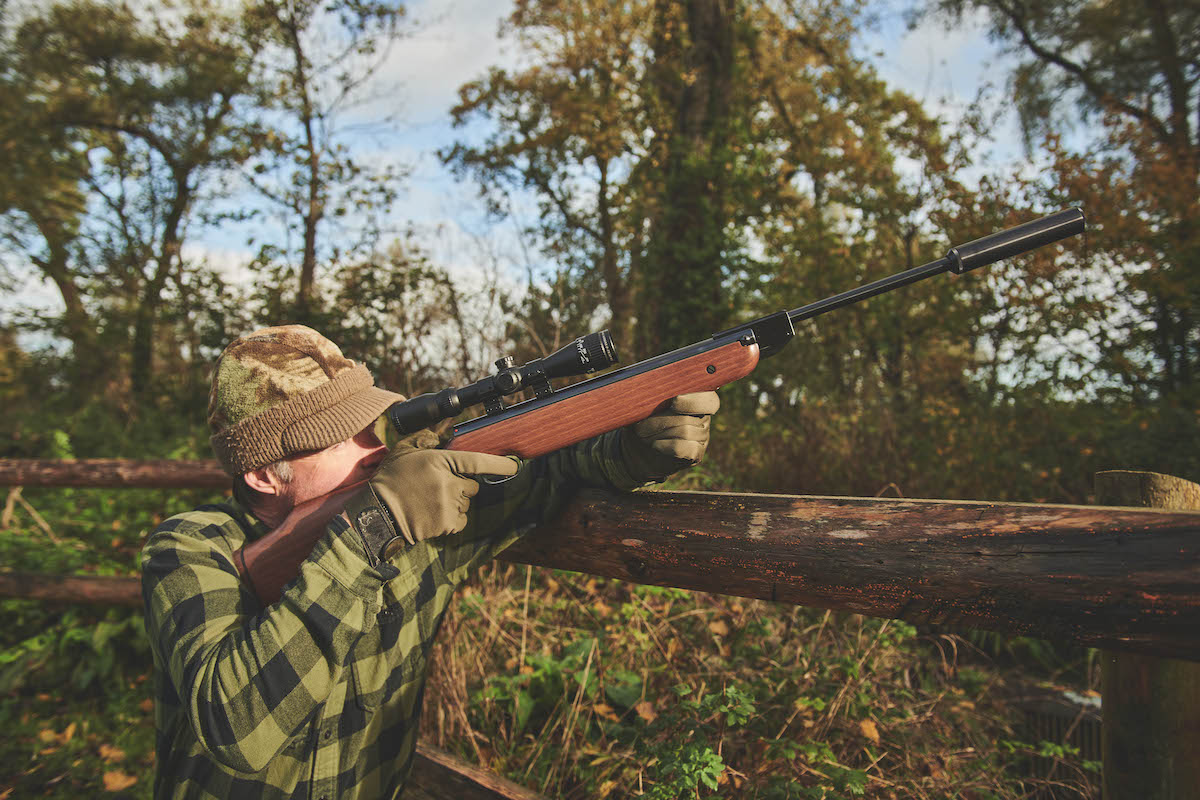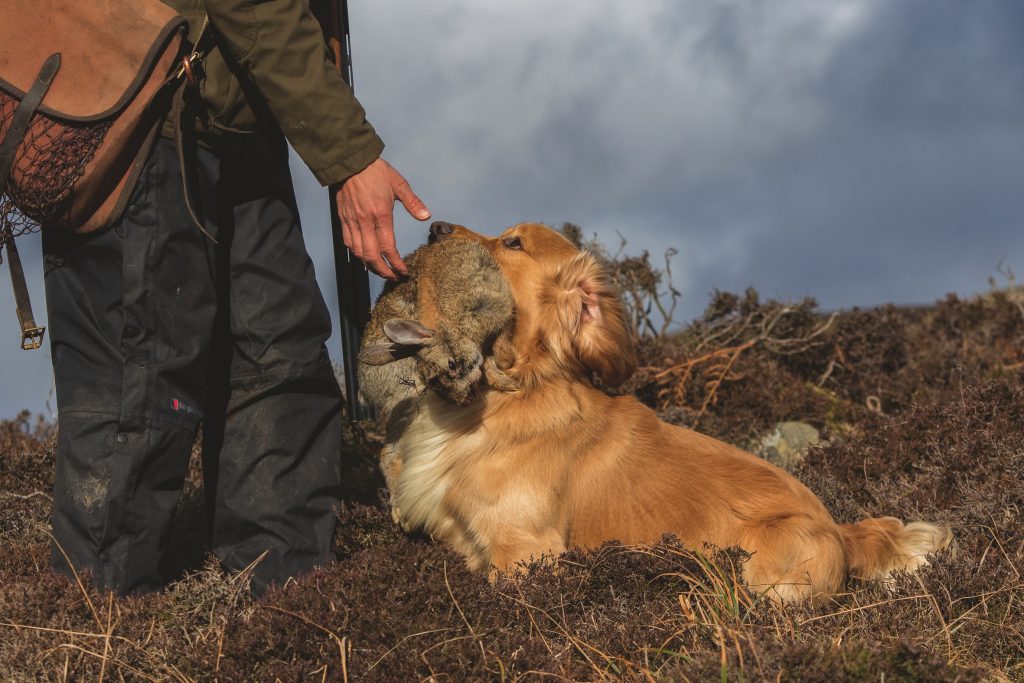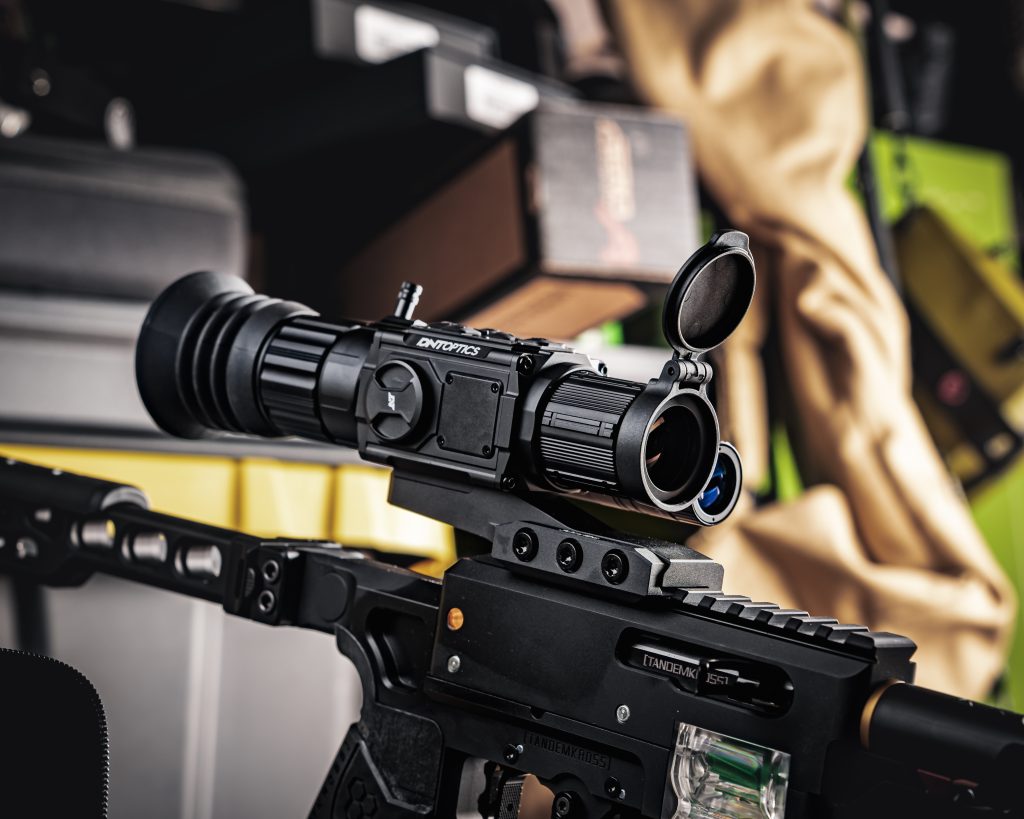Of all the many questions I get asked about airguns and airgun shooting, a huge number relate to high-powered airguns.…
Win CENS ProFlex DX5 earplugs worth £1,149 – enter here
What’s the maximum distance you can hunt with a legal-limit air rifle?
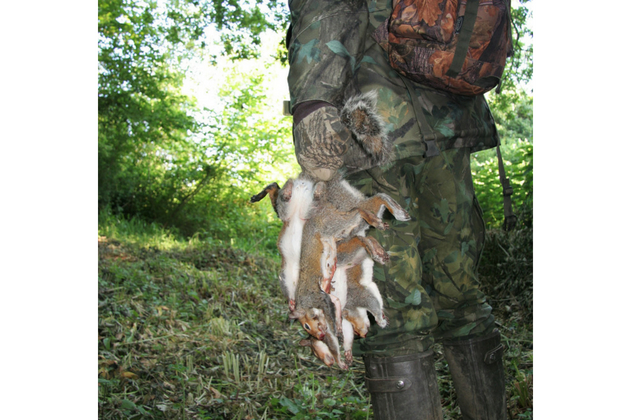
One question I get asked all the time is what are the distances for hunting with a legal-limit air rifle (sub-12ft/lb). How far away can the quarry be and what is the maximum range to achieve a clean kill?
To be frank there is no straight answer to the question.
Is it 40m?
Some gunshops selling air rifles will say 40m as the default. But they may well have no direct experience of hunting with a legal-limit air rifle themselves. And the 40m default distance can be very misleading.
Delivering a clean kill
A pellet fired from a sub-12ft/lb air rifle will still be carrying enough energy to deliver a clean kill at 40m — and significantly further. However, one has to take into account human error. Both newcomers and many experienced Shots would be unable to achieve the accuracy needed to consistently land a pellet in the right place at that distance.
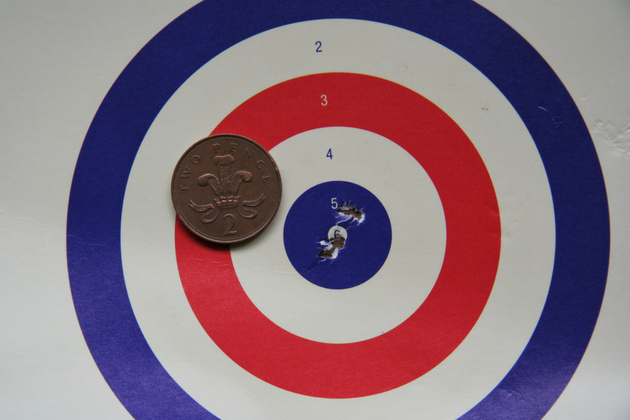
If you can’t group pellets inside a circle the size of a 2p piece, you’ve exceeded your killing range
The scant shock energy delivered by a pellet fired from a legal-limit air rifle means we usually need to hit our quarry in the upper part of the skull to ensure clean, humane kills. There are a few exceptions — small quarry such as magpies and collared doves can be swiftly despatched with a strike to the chest, and a shot to the heart and lung area can snuff out larger quarry such as woodpigeons, crows and grey squirrels if delivered with precision and at the correct angle. But for the average shooter, head shots are the most reliable option, and I usually stick to the same practice when using FAC- rated airguns.
A small kill zone
When it comes to head shots on airgun quarry — and heart-and-lung shots for that matter — you are talking about a very small kill zone. I use a diameter of 30mm as a basic rule of thumb. So the best answer to the maximum lethal range question is: whatever distance you are able to consistently land shots within a circle just a shade larger than a 2p piece. That is an extremely small target but modern air rifles are very precise instruments — it is just a matter of choosing the right pellet and putting in lots of practice in order to learn how to get the very best from your gun/ammunition combo.
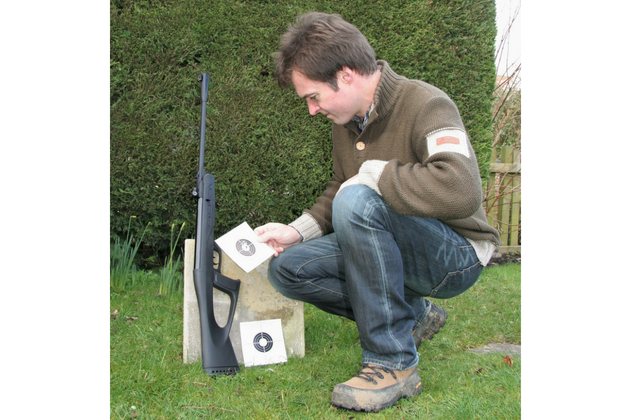
Get to understand how your airgun performs and your own limitations by practising continually
Accuracy is key
Choosing the right airgun ammunition doesn’t mean carrying out lots of tests on ballistic putty to find a pellet that does maximum damage. Pellet manufacturers make lots of claims about pointed pellets improving penetration and hollowpoints turning your airgun into a sledgehammer. However, by and large, fancy pellet designs make very little difference to knock-down power.
The most important consideration in airgun pellet selection is accuracy — land a pellet in your quarry’s brainbox and the unfortunate quarry is going to fall over dead regardless of the shape of your little projectile. For this reason, the high-quality domed pellets used by Field Target and Hunter Field Target shooters are usually the best option, and they also give a nice compromise between penetration and energy transfer. These pellets are not outrageously expensive — you shouldn’t have to pay much more than £15 for a tin of 500 — and tried and tested lines are available from the likes of Air Arms, JSB, Daystate, Bisley, H&N and RWS.
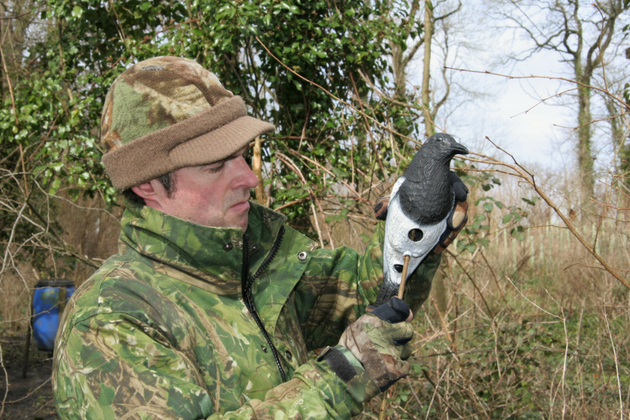
Using fieldcraft to get close to your quarry is far more responsible than taking shots at extreme range
Try different pellets
Airguns can be very pellet-fussy, and it is likely that your barrel will be better suited to one brand of pellets than another. A bit of experimentation can go a long way when it comes to finding the very best ammunition for your gun. My advice is to ask fellow club members or airgunning friends to let you try a variety of their pellets so you can find the best match — even if you have to buy them a pint, it is a lot cheaper than forking out for half-a-dozen or so tins of pellets and then junking most of them.
When you find a pellet that really suits your airgun, stick with it and don’t be tempted to switch to a cheap alternative for practice sessions. Practising with anything other than your favoured hunting pellets is a false economy and a waste of time. The downrange performance of different ammo can vary greatly, so chopping and changing will ruin your chances of fully understanding your pellet’s trajectory so you can use correct hold-over and hold-under to stay on target over varying distances.
Practise from different stances
With your ammo sorted, you can then set about practising from various stances in order to establish the maximum range at which you can expect to hit that all-important 30mm target — that distance will be your self-imposed ceiling and will vary depending on factors such as wind strength and your shooting position. Average expectations might be 20m for freehand standing shots, 25m for sitting or kneeling shots and 30m when shooting prone. If you use a recoil-less precharged pneumatic airgun, you can increase these ranges by using sticks or a bipod to take supported shots, and even by leaning against trees and fence posts — it is not cheating, it is exploiting the full potential of your airgun.
In still conditions, with the right kit, and with lots of practice, you can expect to achieve clean kills on rabbits at 45m when shooting prone and with the added support of a bipod — but it hinges on being able to confidently land your pellet between the eye and ear.

High powered air rifles can put more pests in the bag but only once you have mastered shooting with a legal-limit sub-12ft/lb airgun
Get as close as you can
I would argue that a true sportsman should turn the initial question on its head, though. Ask yourself “how close can I get for the shot?” rather than work out the maximum range for a legal limit air rifle.
If you push the range limit you’ll increase the risk of wounding rather than killing the quarry, which is unacceptable.
The most impressive shooters are those demonstrate restraint and a sound knowledge of fieldcraft than those who try to use long shots for their lack of fieldcraft. Getting close to your quarry is what makes airgun shooting so exciting, and there is nothing more rewarding than making a clean kill after putting in the groundwork to close down the distance.
Powerful air rifles that don’t need a firearms licence
Plinking in the garden is one thing but if you’re after some proper pest control with an air rifle, then…
Airgun laws and security requirements you need to know
Airgun laws in the UK as they stand Airgun shooters are being urged to conform with new legislation relating to…
Watching rabbits scurry off into the brambles or hearing pigeons clatter from the treetops as you try to creep closer might be frustrating but it doesn’t linger like the sight of a wounded animal dragging itself into cover after a recklessly long shot goes wrong. Fieldcraft and sportsmanship should be at the top of the airgun shooter’s priorities.
There is nothing wrong with pushing the distance with your air rifle but shooting at extreme range is for paper targets, not live quarry.
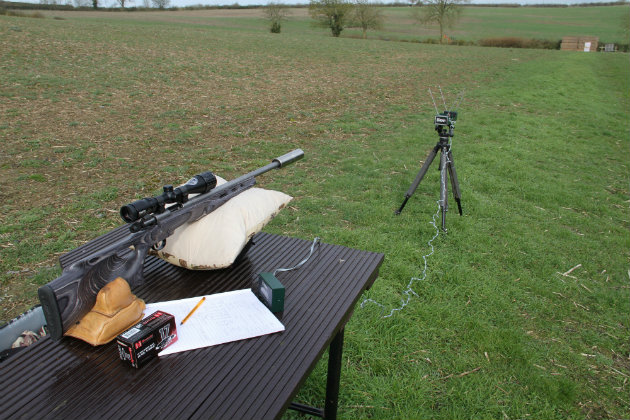
Testing on the bench over the chronograph to get an idea of the rifle and cartridge’s performance
Legal limit setting
Q: How can I tell if my air rifle is legal limit and set below 12 ft/lb at the muzzle?
A: To check this you need a bit of kit called a chronograph. (You’ll find a list of the best chronographs for airguns here.) You fit it over the muzzle and fire a pellet, then the internal electronics do the mathematics give a readout. Chronographs are claimed to be accurate within one per cent.
If your chronograph only tells you pellet speed, then you will have to weigh a pellet in grains, and apply the following formula:
Where V = the velocity in feet per second and W = the projectile weight in grains.
Muzzle energy in ft/lb =
V2 x W
64 x 7000
This formula applies to any projectile, not just an airgun pellet.
Related Articles
Get the latest news delivered direct to your door
Subscribe to Shooting Times & Country
Discover the ultimate companion for field sports enthusiasts with Shooting Times & Country Magazine, the UK’s leading weekly publication that has been at the forefront of shooting culture since 1882. Subscribers gain access to expert tips, comprehensive gear reviews, seasonal advice and a vibrant community of like-minded shooters.
Save on shop price when you subscribe with weekly issues featuring in-depth articles on gundog training, exclusive member offers and access to the digital back issue library. A Shooting Times & Country subscription is more than a magazine, don’t just read about the countryside; immerse yourself in its most authoritative and engaging publication.






